PVC pipe fittings are essential components in plumbing systems, offering various types like couplings, elbows, and tees. They connect, redirect, or regulate fluid flow. Using images from PDF guides helps in easy identification and installation, making them indispensable in both residential and industrial setups.
1.1 Overview of PVC Pipe Fittings
PVC pipe fittings are versatile components used to connect, redirect, or regulate fluid flow in plumbing systems. They are made from polyvinyl chloride, a durable and corrosion-resistant material. Common types include couplings, elbows, tees, and adapters, each serving specific functions. These fittings are widely used in residential, industrial, and irrigation systems due to their lightweight and ease of installation. PDF guides often provide detailed images and names of PVC fittings, helping users identify and select the right components for their projects. Understanding the basics of PVC pipe fittings is essential for designing and maintaining efficient piping systems. Their affordability and reliability make them a preferred choice globally.
1.2 Importance of PVC Fittings in Plumbing Systems
PVC fittings are crucial for connecting, redirecting, and regulating water flow in plumbing systems. Their corrosion-resistant and durable nature ensures long-lasting performance, even in harsh environments. These fittings are cost-effective, lightweight, and easy to install, reducing labor costs. They are ideal for residential, industrial, and irrigation systems due to their versatility and reliability. PVC fittings also provide excellent resistance to chemicals and extreme temperatures, making them suitable for diverse applications. Their use enhances system efficiency and reduces maintenance needs. By referring to PDF guides with images, users can easily identify and select the right fittings for their projects, ensuring optimal performance and safety in plumbing setups.
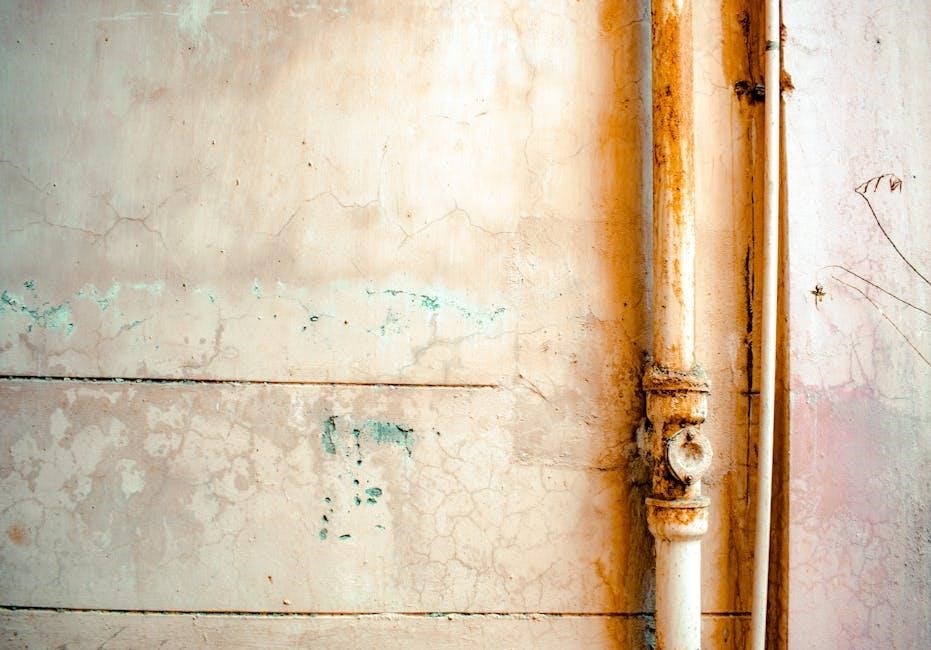
Types of PVC Pipe Fittings
PVC pipe fittings include couplings, elbows, tees, adapters, valves, nipples, flanges, bushings, plugs, and caps. These components connect, redirect, or seal pipes, essential for various plumbing systems.
2.1 Couplings
Couplings are fittings used to connect two pipes of the same diameter; They are available in various types, such as straight, reducing, and flexible couplings, each designed for specific applications. Straight couplings join pipes in a straight line, maintaining the same diameter throughout. Reducing couplings, on the other hand, connect pipes of different sizes, smoothly transitioning from one diameter to another. Flexible couplings are ideal for systems where movement or vibration is expected, offering a degree of flexibility to absorb shocks without compromising the seal. These couplings are typically made from durable materials like PVC, ensuring long-lasting performance and resistance to corrosion. Proper installation ensures a leak-free connection, making them a crucial component in maintaining the integrity of any plumbing or piping system. Images in PDF guides provide clear visuals, helping users identify and select the appropriate coupling for their needs. Regular inspection and maintenance of couplings are essential to prevent potential issues such as leaks or cracks. By understanding the different types and their applications, users can optimize their system’s efficiency and reliability. Couplings are a fundamental part of PVC pipe fittings, enabling seamless connections and ensuring the smooth operation of fluid transport systems. They are widely used in residential, industrial, and irrigation setups, highlighting their versatility and importance. With the help of PDF resources, users can easily locate the correct coupling type, ensuring compatibility and proper function.
2.2 Elbows
PVC elbows are fittings used to change the direction of a pipe, typically at 90-degree or 45-degree angles. They are crucial for creating bends in piping systems, allowing for flexible routing of fluids. Available in various sizes, elbows ensure smooth transitions, reducing turbulence and pressure drops. Common types include 90-degree elbows for sharp turns and 45-degree elbows for gradual direction changes. Made from durable PVC, they resist corrosion and withstand various environmental conditions. Images in PDF guides help users identify the correct elbow type for their needs. Proper installation of elbows is essential to maintain system efficiency and prevent leaks. They are widely used in residential plumbing, irrigation, and industrial piping systems, showcasing their versatility and importance in fluid transport applications.
2.3 Tees
PVC tees are fittings that allow a single pipe to split into two branches, enabling the connection of three pipes. They are ideal for combining or diverting fluid flow in plumbing systems. Available in various sizes, tees are used in residential, irrigation, and industrial applications. They come in different types, such as equal tees, where all branches are the same size, and reducing tees, where one branch is smaller. PVC tees are durable, resistant to corrosion, and easy to install. Images in PDF guides help users identify the correct tee for their needs. Proper installation ensures efficient fluid distribution and minimizes pressure drops, making tees essential for maintaining system performance and longevity.
2.4 Adapters
PVC adapters are versatile fittings used to connect pipes of different sizes or types. They enable transitions between pipes, ensuring compatibility and a secure seal. Adapters can be male or female threaded, slip, or socket types, making them ideal for various plumbing scenarios. Their applications range from residential to industrial systems, where size or material transitions are necessary. Images in PDF guides provide clear visuals for identification, helping users select the right adapter for their needs. PVC adapters are durable, resistant to corrosion, and easy to install. They are essential for maintaining the integrity and performance of piping systems, offering a reliable solution for connecting diverse pipe configurations efficiently.
2.5 Valves
PVC valves are crucial for controlling fluid flow in plumbing systems. They regulate the flow by opening, closing, or modulating it, ensuring efficient operation. Common types include ball, gate, and check valves. Ball valves are known for their ease of use and quick operation, while gate valves offer precise control. Check valves prevent backflow, safeguarding the system from contamination. Images in PDF guides help identify each valve type, aiding in selection for specific applications. PVC valves are lightweight, corrosion-resistant, and durable, making them ideal for both residential and industrial use. Regular maintenance ensures optimal performance, preventing leaks and maintaining system integrity over time.
2.6 Nipples
PVC nipples are short, straight pipe fittings used to connect two fittings or pipes. They are ideal for tight spaces and simple connections. Available in various lengths, they provide a male-threaded connection on both ends. Images in PDF guides show their design, helping in easy identification. PVC nipples are lightweight, corrosion-resistant, and easy to install. They are commonly used in plumbing systems for water supply lines, irrigation, and industrial piping. Their durability ensures long-lasting performance, making them a reliable choice for various applications. PVC nipples are also cost-effective, offering a practical solution for connecting pipes in residential and commercial settings.
2.7 Flanges
PVC flanges are circular fittings used to connect pipes, valves, or pumps securely. They feature bolt holes for tight connections, ensuring durability and leak resistance. Available in types like slip-on and socket weld, they suit various plumbing needs. Images in PDF guides help identify flanges, showcasing their design and installation. PVC flanges are lightweight, corrosion-resistant, and ideal for water supply, irrigation, and industrial systems. Their chemical resistance makes them suitable for harsh environments. Easy to install, they provide a reliable connection, enhancing system performance. PVC flanges are versatile and durable, offering a practical solution for diverse piping applications while maintaining structural integrity and longevity;
2.8 Bushings
PVC bushings are fittings that enable connections between pipes of different sizes; They are cylindrical and tapered, allowing for a smooth transition from one diameter to another. Bushings are essential for adapting pipes in various plumbing systems. Images in PDF guides demonstrate their design, showing how they fit seamlessly into piping configurations. PVC bushings are resistant to corrosion and chemicals, making them ideal for both residential and industrial use. Their versatility ensures compatibility with different pipe sizes, providing a secure and leak-resistant connection. By facilitating size transitions, PVC bushings enhance system flexibility and efficiency, making them a crucial component in modern piping setups.
2.9 Plugs
PVC plugs are used to seal pipe ends, preventing leakage and contamination. Available in socket and test plug styles, they provide secure connections. Images in PDF guides show their designs, aiding identification. Plugs are durable, chemical-resistant, and ideal for various plumbing applications. They are commonly used in residential and industrial settings to cap pipes during maintenance or installation. PVC plugs ensure tight seals, preventing fluid or gas escape. Their versatility makes them indispensable in piping systems. Proper installation ensures long-term reliability. PDF resources often detail plug specifications and usage, helping users select the right type for their needs. This ensures efficient and leak-free connections in diverse setups.
2.10 Caps
PVC caps are essential for sealing pipe ends, protecting them from debris and corrosion. They are available in various sizes and types, such as slip-on and threaded caps. Images in PDF guides illustrate their designs, facilitating easy identification and selection. PVC caps are durable, resistant to chemicals, and suitable for both indoor and outdoor use. They are widely used in plumbing, irrigation, and industrial piping systems. Proper installation ensures a watertight seal, preventing leakage and contamination. PDF resources often provide detailed specifications and installation tips, helping users choose the right cap for their application. This ensures a secure and long-lasting connection in various piping setups.
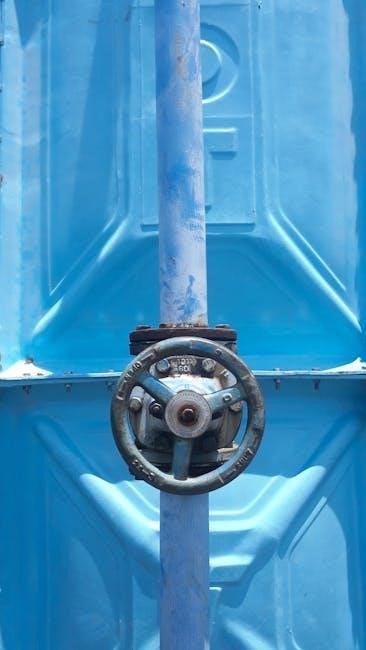
Materials and Manufacturing of PVC Fittings
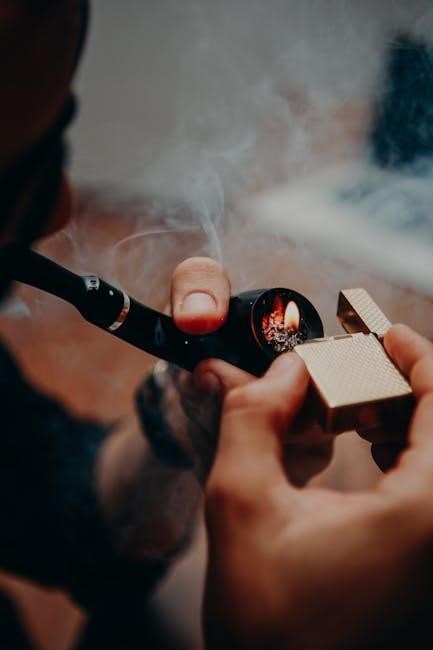
PVC fittings are made from PVC resin, stabilizers, and lubricants. The manufacturing involves mixing, extrusion, injection molding, and quality control to ensure durability and reliability.
3.1 Raw Materials Used for PVC Fittings
The primary raw material for PVC fittings is polyvinyl chloride (PVC) resin, a thermoplastic polymer. Other essential components include plasticizers, stabilizers, lubricants, and fillers. Plasticizers enhance flexibility, while stabilizers prevent degradation from heat or UV exposure. Lubricants facilitate smooth processing during manufacturing, and fillers improve mechanical properties. Pigments may also be added for color. These materials are carefully selected to ensure the fittings meet durability, chemical resistance, and performance standards required for various applications, from plumbing to industrial systems.
3.2 Manufacturing Process of PVC Pipe Fittings
The manufacturing of PVC pipe fittings involves several key steps. First, raw materials, including PVC resin and additives, are mixed and compounded into a uniform blend. This mixture is then melted and formed into the desired shape using processes like injection molding or extrusion. For complex fittings, injection molding is commonly used, while simpler shapes may be produced through extrusion. After molding, the fittings are cooled and removed from the molds. Finally, they undergo quality control checks to ensure they meet dimensional and performance standards. This process ensures durability and reliability for various applications, from residential plumbing to industrial piping systems.
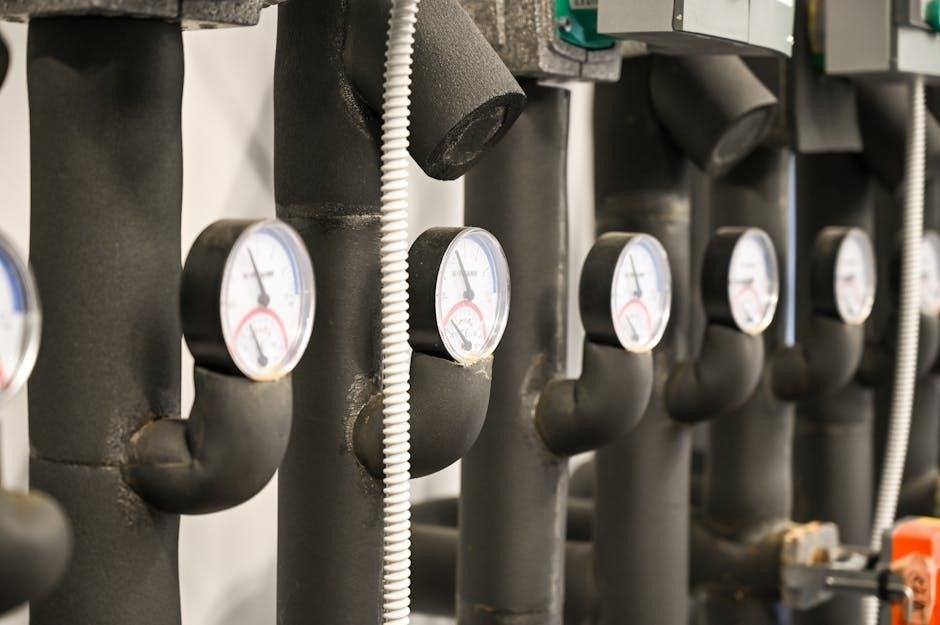
Applications of PVC Pipe Fittings
PVC pipe fittings are versatile, widely used in water supply, irrigation, and industrial systems. Their corrosion resistance and durability make them ideal for residential, agricultural, and sewer applications.
4.1 Residential Plumbing
PVC pipe fittings are widely used in residential plumbing for water supply and drainage systems. They are cost-effective, corrosion-resistant, and easy to install. Common fittings include couplings, elbows, and tees, which connect, redirect, or branch pipes. Adapters are used to transition between different pipe sizes, ensuring compatibility. PVC fittings are ideal for underground and above-ground applications due to their durability and resistance to chemicals. In homes, they are used for sink drains, toilet connections, and water lines. Their versatility and reliability make them a preferred choice for plumbers. Referencing images from PDF guides helps homeowners and professionals identify the right fittings for specific residential plumbing needs, ensuring proper installation and system functionality.
4.2 Irrigation Systems
PVC pipe fittings play a crucial role in irrigation systems, ensuring efficient water distribution for crops. Common fittings like couplings, elbows, tees, adapters, and valves connect, redirect, or control water flow. Durable and corrosion-resistant, PVC is ideal for outdoor use. Its lightweight and easy installation make it cost-effective. Proper fitting selection is vital for maintaining uniform water supply, essential for crop health. Images from PDF guides help identify suitable fittings for specific irrigation setups, ensuring correct installation and optimal system performance. This reliability makes PVC fittings a cornerstone in modern agricultural irrigation, promoting water conservation and crop productivity.
4;3 Industrial Piping
PVC pipe fittings are widely used in industrial piping systems due to their durability and resistance to corrosion and chemicals. They are ideal for conveying harsh substances, ensuring long-term performance. Common fittings like tees, elbows, and valves facilitate complex piping layouts. PVC’s smooth interior surface minimizes friction, enhancing flow efficiency. Its lightweight and ease of installation reduce labor costs. In industrial settings, PVC fittings are used for water treatment, chemical processing, and waste management. Images from PDF guides help professionals identify the right fittings for specific industrial applications, ensuring safe and reliable system operation. This makes PVC fittings a preferred choice for modern industrial piping solutions.
4;4 Sewer and Drainage Systems
PVC pipe fittings are extensively used in sewer and drainage systems due to their resistance to corrosion and abrasive materials. Their smooth surfaces reduce clogging risks, ensuring efficient flow. Common fittings like tees, elbows, and couplings facilitate proper system connections. PVC’s durability and chemical resistance make it ideal for underground applications. Images from PDF guides help identify suitable fittings for sewer and drainage setups, ensuring reliable performance. PVC fittings are lightweight, reducing transportation and installation costs. They are widely used in municipal and residential drainage systems, offering a cost-effective and long-lasting solution for waste management. This makes PVC fittings a critical component in modern sewerage infrastructure.

Installation and Maintenance
PVC pipe fittings installation requires proper tools and clean connections for durability. Regular maintenance ensures leak prevention and longevity. Images from PDF guides provide step-by-step installation visuals.
5.1 Steps for Installing PVC Pipe Fittings
Installing PVC pipe fittings involves several key steps to ensure a secure and leak-free connection. Begin by cutting the PVC pipe to the required length using a pipe cutter or saw. Next, clean and deburr the pipe ends to prevent debris from causing issues. Apply a thin layer of PVC primer to the pipe and fitting, followed by a coat of cement. Quickly connect the pipe to the fitting, ensuring proper alignment; Hold the connection in place for a few seconds to allow the cement to set. Finally, let the connection cure for the recommended time before testing under pressure.
5.2 Tools Required for PVC Pipe Fittings Installation
Several tools are essential for installing PVC pipe fittings. A pipe cutter or hacksaw is used to cut the PVC pipe to the desired length. A utility knife or deburring tool is necessary to smooth the pipe ends. A pipe bender may be needed for bending pipes without kinking. For connecting fittings, PVC primer and cement, along with an applicator brush, are required. A wrench or pliers can help tighten fittings securely. A dry cloth is used to clean the pipe and fitting surfaces before applying cement. Safety gear like gloves and goggles is also recommended. Proper organization and use of these tools ensure a successful and leak-free installation.
5.3 Maintenance Tips for PVC Fittings
Regular maintenance of PVC fittings is crucial to ensure long-lasting performance. Inspect fittings periodically for signs of wear, cracks, or leaks. Clean surfaces with a soft cloth to remove dirt or debris that could affect sealing. Avoid exposing PVC fittings to harsh chemicals or extreme temperatures, as they can degrade the material. For minor leaks, apply a PVC pipe repair compound or replace the fitting if damage is severe. Store unused fittings in a dry, shaded area to prevent UV degradation. Proper maintenance extends the lifespan of PVC fittings and ensures reliable system operation. Always follow manufacturer guidelines for specific care instructions.
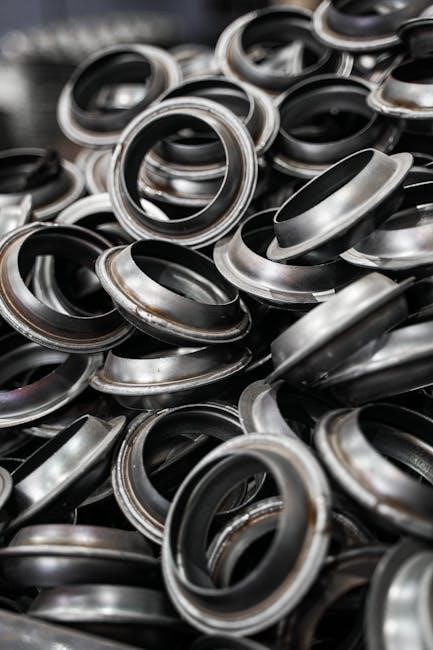
Safety and Standards
PVC pipe fittings must be handled with care to avoid damage. Always follow safety guidelines and use protective gear. Ensure fittings meet international standards for durability and safety.
6.1 Safety Precautions When Handling PVC Fittings
When handling PVC pipe fittings, wear protective gloves and eyewear to prevent injury. Avoid inhaling dust during cutting or drilling. Use proper tools to prevent cracking. Ensure the workspace is well-ventilated and free from flammable materials. Never use open flames near PVC as it releases toxic fumes when burned. Keep fittings away from extreme temperatures to maintain their structural integrity. Properly secure fittings during transportation to avoid damage or accidents. Always follow the manufacturer’s guidelines for handling and installation. By adhering to these precautions, you can ensure a safe working environment and prevent potential hazards associated with PVC fittings.
6.2 International Standards for PVC Pipe Fittings
International standards for PVC pipe fittings ensure quality, safety, and compatibility across global markets. Standards like ASTM D2464 and ISO 1452 specify requirements for PVC pipes and fittings, covering dimensions, tolerances, and material properties. These standards ensure fittings meet minimum performance criteria, such as impact resistance and chemical compatibility. Compliance with these standards is verified through rigorous testing and certification processes. Manufacturers must adhere to these guidelines to guarantee their products meet international safety and reliability expectations. Proper labeling and markings on PVC fittings, as per these standards, help users identify suitable products for their applications. Adhering to international standards ensures PVC fittings are durable, reliable, and suitable for diverse plumbing and industrial systems worldwide.

Identifying PVC Pipe Fittings
PVC pipe fittings can be identified using images and naming conventions. Common types include elbows, tees, and couplings, each with distinct shapes and functions.
7.1 How to Identify Different Types of PVC Fittings
To identify PVC fittings, refer to a PDF guide that provides images and names of each type. Start by locating the section with diagrams and labels. Look for common fittings like couplings, elbows, and tees. Match each name with its image, noting their shapes and connections. Use any available descriptions or legends to understand their functions. For example, an elbow changes direction, while a coupling connects pipes. Pay attention to specific features, such as threads or sockets, to distinguish between similar fittings like bushings and nipples. Create flashcards or a cheat sheet to aid memorization. Ensure accuracy to avoid installation errors.
7.2 Using Images to Recognize PVC Fittings
Images in PDF guides are invaluable for recognizing PVC fittings, as they provide clear visual representations. By examining high-quality diagrams, users can identify fittings like elbows, tees, and couplings based on their shapes and connection types. Labels and descriptions accompanying the images help differentiate between similar-looking fittings, such as bushings and nipples. Comparing the images to actual fittings ensures accurate identification. This method is especially useful for beginners, as it bridges the gap between theoretical knowledge and practical application. Always cross-reference images with textual descriptions to confirm the purpose and proper use of each fitting; This approach ensures precision and confidence when selecting or installing PVC components.

Troubleshooting Common Issues
Leaks, cracks, and loose connections are common issues with PVC fittings. These problems often arise from poor installation, material defects, or environmental factors. Inspecting and replacing faulty fittings promptly prevents further damage.
8.1 Common Problems with PVC Pipe Fittings
Common issues with PVC pipe fittings include leaks, cracks, and loose connections. Leaks often occur due to improper sealing or damaged gaskets. Cracks may result from environmental stress, such as extreme temperatures or physical impact. Loose connections can arise from inadequate gluing or tightening during installation. Misalignment of pipes and fittings is another frequent problem, leading to system inefficiency. Additionally, material degradation over time can weaken fittings, especially when exposed to chemicals or UV light. Identifying these issues early is crucial to prevent further damage and ensure system reliability. Using images from PDF guides can help in diagnosing and addressing these problems effectively.
8.2 Solutions for Leaks and Cracks in PVC Fittings
To address leaks and cracks in PVC fittings, start by identifying the source of the issue. For minor leaks, applying PVC cement or a sealant can often resolve the problem. Cracks may require replacing the damaged fitting entirely. Ensure proper installation techniques, such as using primer and cement, to prevent future leaks. Tightening loose connections and aligning pipes correctly can also mitigate issues. For severe cracks, epoxy resin can provide a temporary fix, but replacement is recommended for long-term reliability. Consulting images from PDF guides can help in diagnosing and applying the correct repair methods effectively.
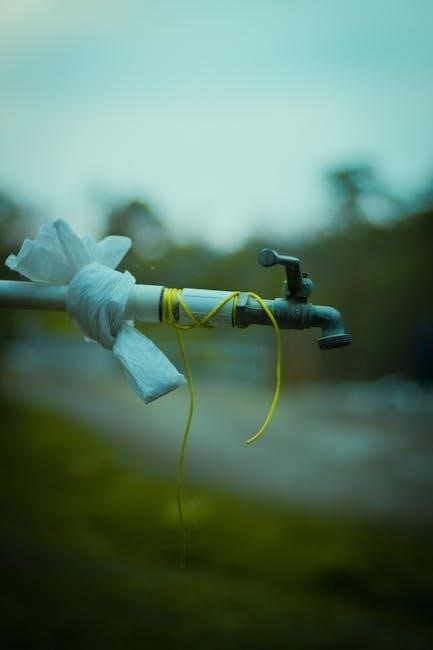
Resources and References
Explore PDF guides, online catalogs, and glossaries for detailed information on PVC pipe fittings, including names, images, and installation tips. These resources are widely available online.
9.1 PDF Guides for PVC Pipe Fittings
PVC pipe fittings PDF guides are comprehensive resources that provide detailed information on various fittings, including names, images, and installation instructions. These guides are widely available online and serve as invaluable tools for professionals and DIY enthusiasts alike. Many PDF guides include diagrams, charts, and step-by-step tutorials to help users identify and install fittings correctly. They often cover topics such as material specifications, sizing charts, and compatibility with different plumbing systems. Additionally, these guides may include troubleshooting tips and maintenance advice. Whether you’re working on a residential project or an industrial setup, PVC pipe fittings PDF guides offer a wealth of knowledge to ensure successful and durable installations. They are easily accessible and often free to download, making them a must-have resource for anyone working with PVC piping systems.
9.2 Online Catalogs for PVC Fittings
Online catalogs for PVC fittings provide a convenient and detailed way to explore various products. These catalogs often feature high-quality images, product specifications, and descriptions, making it easier to identify and select the right fittings. Many catalogs are searchable by type, size, and material, allowing users to quickly find specific items. They also include information on compatibility, dimensions, and installation requirements. Some catalogs even offer 3D models or downloadable PDFs for further reference. Online catalogs are a valuable resource for professionals and DIY enthusiasts, enabling them to compare products and make informed purchasing decisions. They are accessible 24/7, making it easier to plan and execute plumbing projects efficiently.
9.3 Glossary of Terms Related to PVC Fittings
A glossary of terms related to PVC fittings provides clear definitions for common terminology. Terms like coupling (connects two pipes), elbow (changes pipe direction), and tee (allows branching) are essential. Adapter refers to fittings that connect pipes of different sizes or types, while valve controls fluid flow. Nipple is a short pipe fitting used for connecting two fittings. Flange provides a flat surface for pipe connection, and bushings reduce pipe sizes. Plug and cap seal pipe ends. Understanding these terms aids in selecting the right fittings for plumbing systems, ensuring efficient and leak-free installations. This glossary serves as a quick reference guide for professionals and DIY enthusiasts alike.